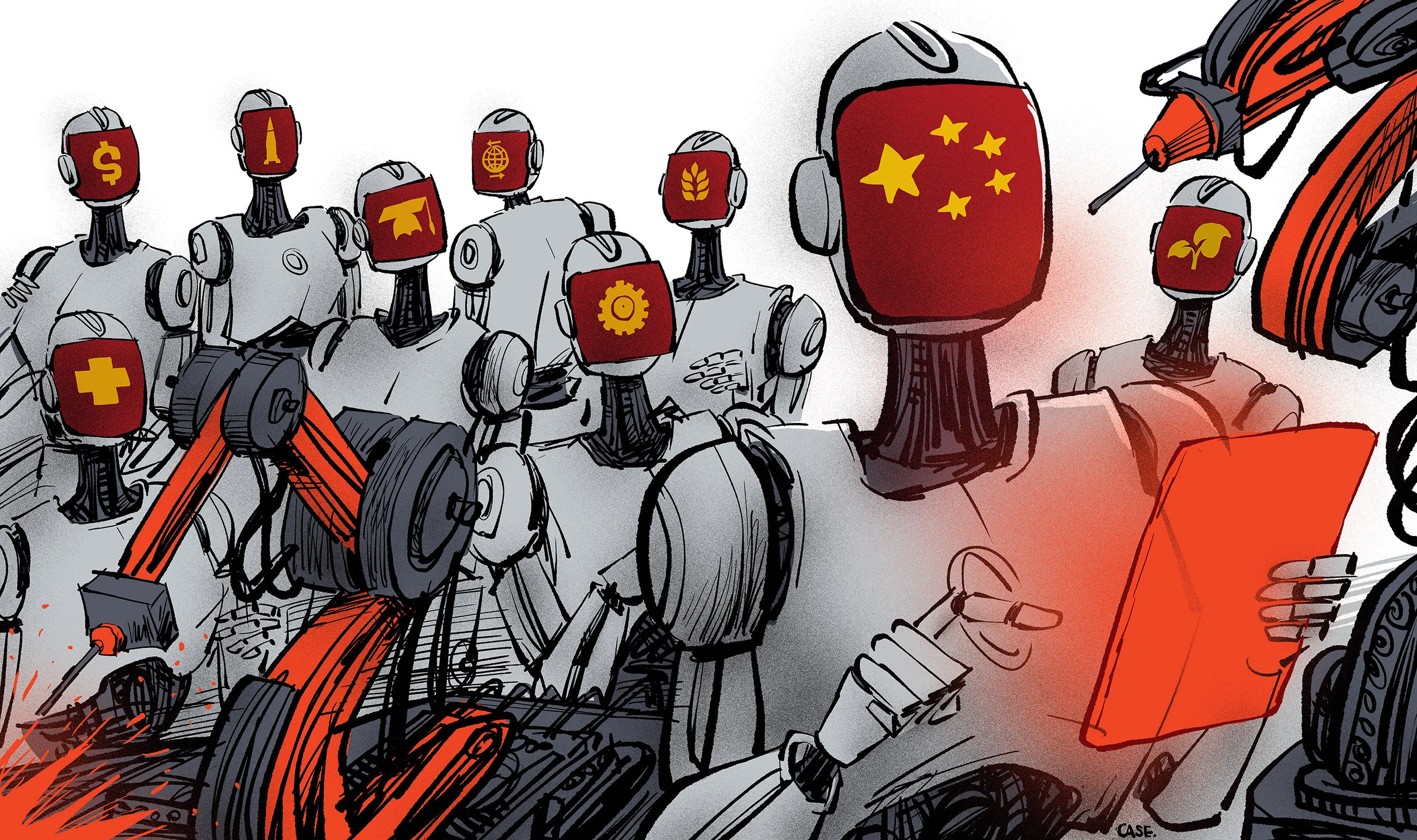By Gerui Wang
Copyright scmp

Factories in China installed nearly 300,000 new robots last year, more than the rest of the world combined. This figure suggests that China is building leadership in robotics not merely for industrial efficiency, but as a direct path to achieving independence in core artificial intelligence (AI) technologies.
The prioritisation of embodied intelligence, or AI-powered robots, at events such as last week’s AI Computing Conference in Beijing signals that the country views robotics as critical infrastructure for future resilience, far beyond stand-alone technological products. This aligns with global trends, such as the UK’s Smart Machines Strategy 2035 and the United States’ AI Action Plan, which lacks a specific robotics development plan.
However, China proposes a distinct approach characterised by a public-private collaboration that operates across the entire industry ecosystem, with a focus on integration and scale. While American entrepreneurial leaders such as Nvidia and OpenAI are betting heavily on the fusion of world foundation models with their physical AI development, China’s Huawei and DeepSeek are open-sourcing their AI computing toolkit and large language models.
China’s cohesive, long-term policy framework provides the foundation. Its robotics development strategies have systematically supported the industry since at least 2016. Initiatives such as Made in China 2025, the Guidelines for Robotics Development under the 14th five-year plan and the State Council’s AI Plus action plan promote robotics adoption across a vast spectrum of sectors, from manufacturing, aerospace and medical care to logistics, agriculture, environmental governance and education. This is a concerted effort to embed robotics into the fabric of the economy and society.
The wide-ranging focus creates massive domestic demand for the advanced perception and decision-making capabilities that define embodied intelligence. In turn, this demand cultivates a built-in market for China’s own AI chips.
Huawei’s recent announcement of the Atlas 950 SuperPoD, a supercomputing cluster comprising up to 8,192 Ascend 950DT chips, shows its commitment to powering China’s booming AI industries with domestically designed products. Huawei plans to open-source both the hardware designs and core software stack by the end of 2025, charting a strategic move to accelerate ecosystem adoption and establish a global standard for AI infrastructure.
China’s robotics development shows remarkable geographical diversity, with policy support extending well beyond traditional tech centres. Major cities across the country have established robotics innovation centres, while provinces such as Shanxi, Shandong and Hubei have launched comprehensive industrial policies.
This diffusion of high tech ensures that robotics innovation isn’t confined to a few elite regions but becomes a national priority. For instance, Hunan province’s AI Industry Three-Year Development Action Plan specifically promotes cluster development of upstream and downstream enterprises in the value chain.
This ecosystem-driven strategy shows that robotics development is organically built on local industrial strengths. Shandong province has outlined its own High-quality Robotics Industry Development Action Plan (2025-2027), specifying key directions for humanoid, collaborative and industrial robots.
In Wuhan, its Guanggu district alone has achieved 85 per cent coverage of the entire industrial chain, with 31 key components for humanoid robots being produced locally. Developments in the city has focused on critical technologies such as dexterous hands and high-performance integrated joints. The goal is to accelerate robot applications from industrial manufacturing to elderly care and modern agriculture.
Such regional specialisation creates a resilient, nationally integrated supply chain that is less vulnerable to bottlenecks and accelerates iterative innovation by connecting diverse capabilities.
China’s extensive manufacturing and institutional landscape offers a decisive advantage by allowing rapid experimentation. Companies such as Unitree and AgiBot can mass-produce advanced robots at a fraction of the cost in part because they can rapidly upgrade and refine their technologies in real factories, warehouses and public spaces.
Notably, China’s drive to integrate robots into daily life and foundational institutions also boosts innovation and growth. The Ministry of Education has called for the integration of AI into teaching in K-12 schools, aiming to allow all students access to AI labs and AI learning services. This systematic effort to prepare the next generation for a more automated future further fuels demand for domestic AI technologies.
China’s push for technological self-reliance is also vividly demonstrated in the healthcare sector, where AI and robotics adoption is being implemented at a municipal scale rather than in pilot programmes. Shenzhen, for instance, has deployed nearly 450 AI medical products across its hospital network to tackle a range of challenges – from easing administrative bottlenecks by using AI to complete patient records in minutes to assisting complex clinical tasks such as prenatal ultrasounds and powering rehabilitation robots.
This systematic integration serves as a real-world laboratory for enhancing AI and robotics in healthcare. It generates the immense, high-quality data sets necessary to train and refine domestic AI models and robots. By creating demand and testing grounds within its own public systems, China accelerates the viability of its entire AI and robotics ecosystem.
The encouragement of public-facing adoption stands in contrast to the robotics industry in the US, which focuses primarily on industrial applications and commercialisation in the private sector. China’s robotics advancement benefits from a multifaceted strategy that aligns state policy with industrial capacity and societal adaptation.
The nationwide push across different domains, combined with strategic adoption of AI and embodied intelligence in both private and public sectors, creates a powerful innovation ecosystem. By building a complete supply chain of physical AI, China is creating the conditions that lead to more equitable deployment of automated technologies.



